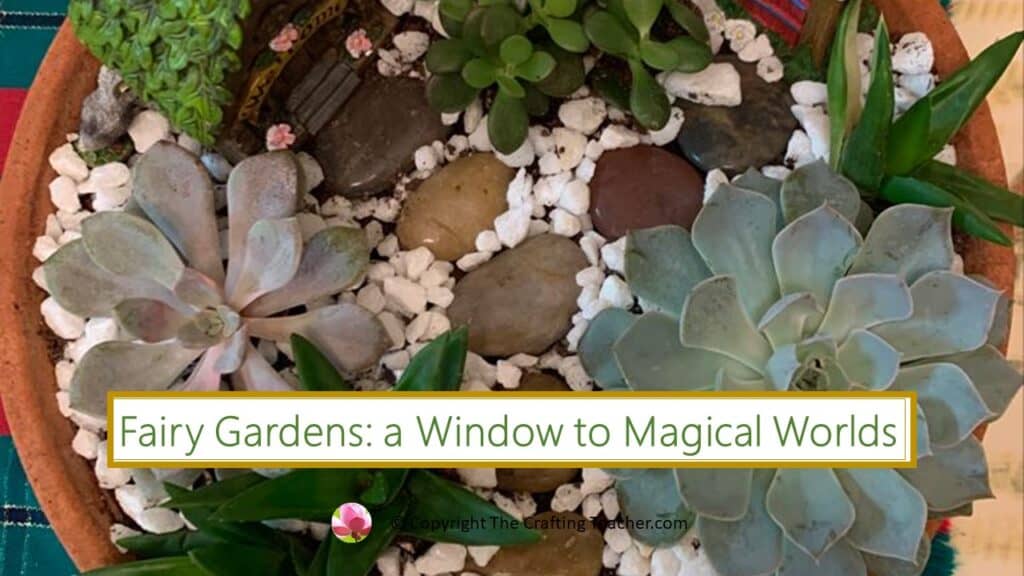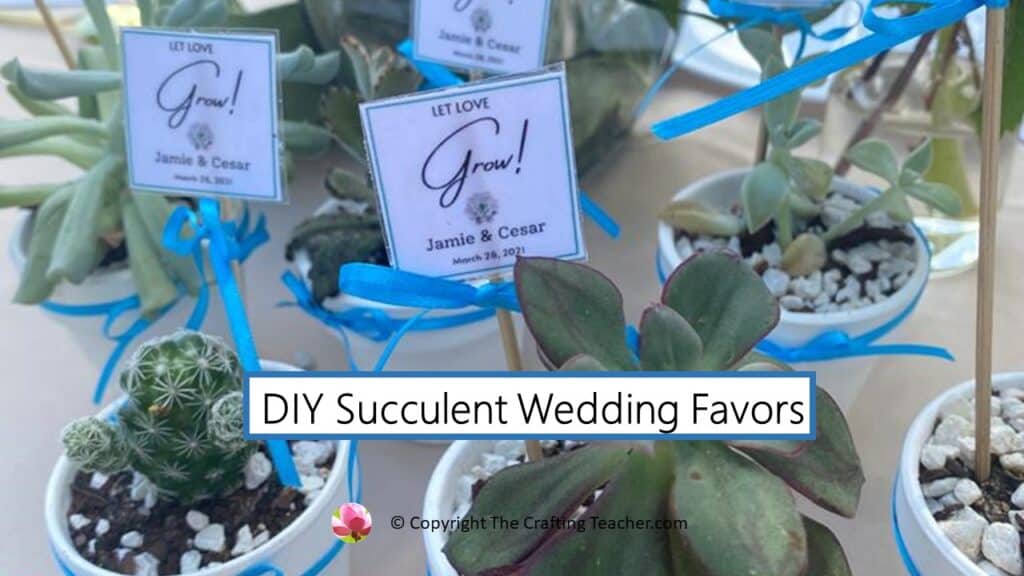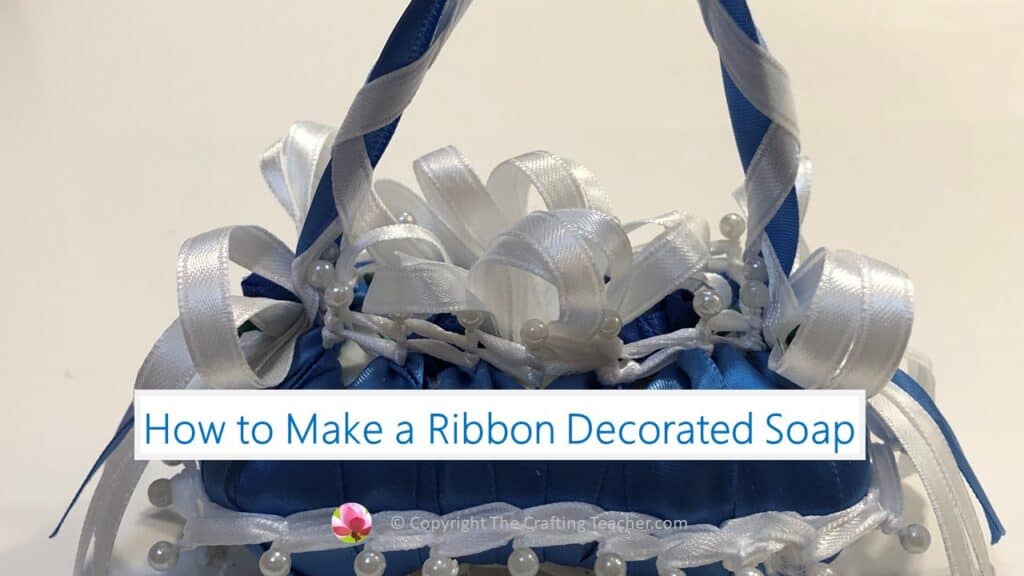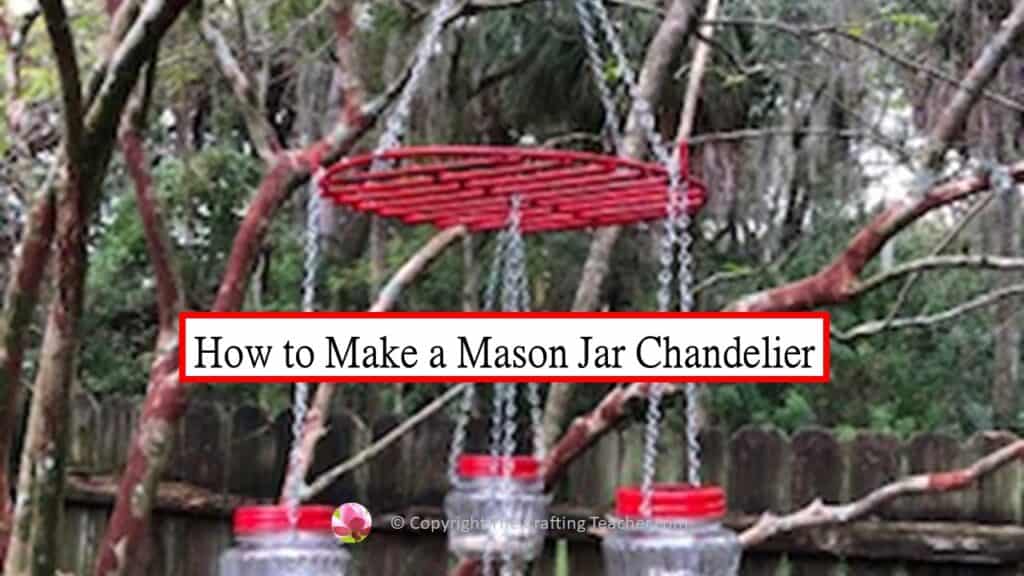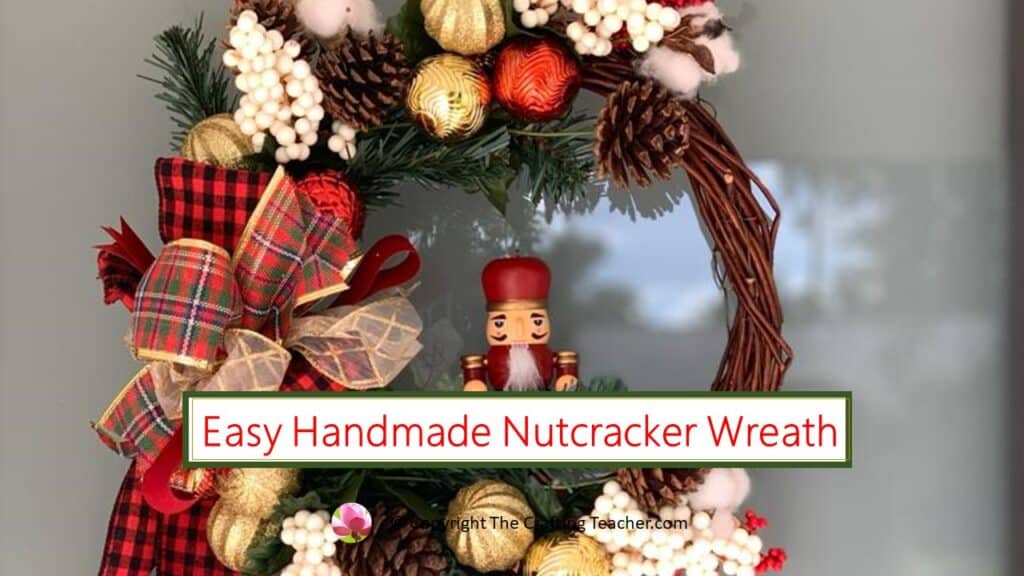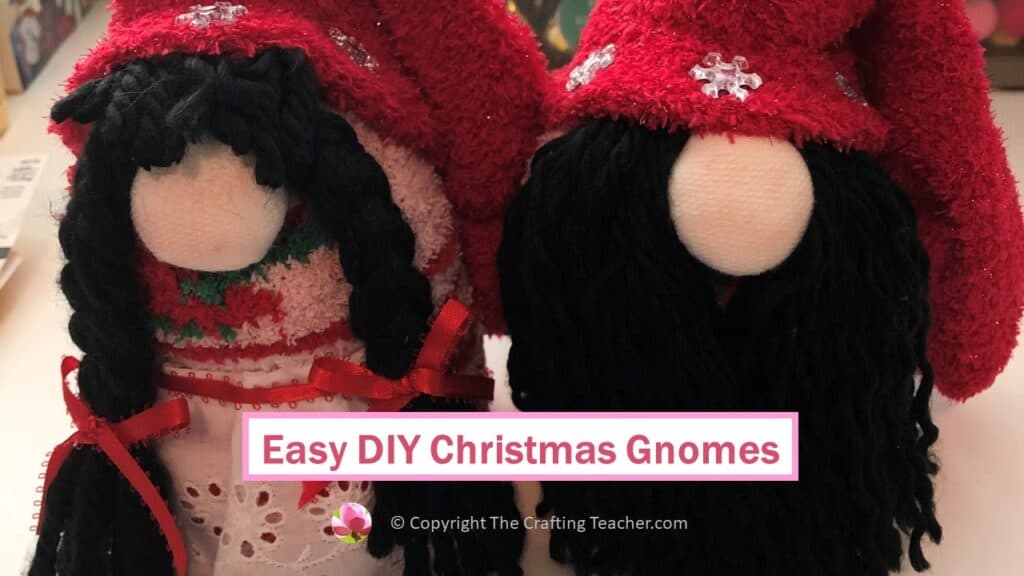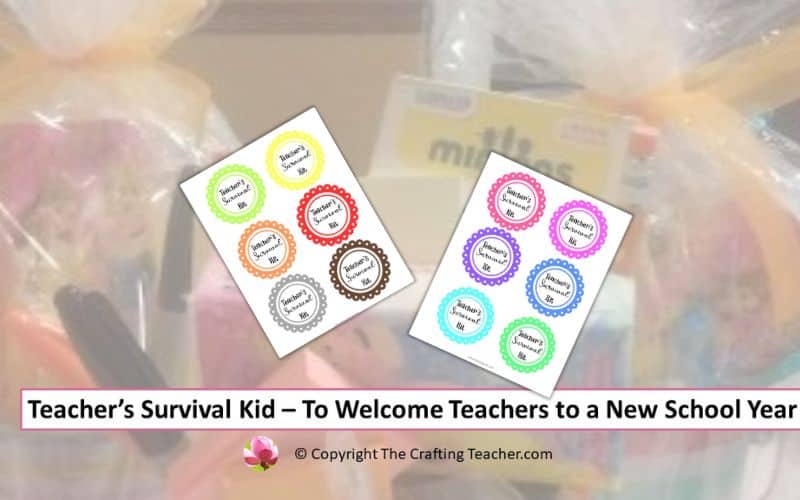Affiliate Disclosure: “This post contains affiliate links, which means I receive a small commission, at no extra cost to you, if you make a purchase using those links.”
Fairy Gardens: a Window to Magical Worlds
Fairy gardens are one of my passions. I love creating them and letting my imagination run wild while I add little plants and all kinds of accessories, to create a miniature world to invite any fairy to fall in love with it and take it as her habitat.
These miniature gardens are so easy to make, that you can invite your preschoolers to help you or just do it by themselves since there is no right or wrong in their design. It is a matter of enjoying the moment, having fun, and letting your imagination loose.
Involving your preschoolers in the making of your fairy garden will probably end up being a great idea. It will not only allow you to have quality time with your child but also will give you direct access to your child’s brain.
Preschoolers are an endless source of imagination that can guide you to spruce your creativity and your child’s as well.
To understand a little more what I am talking about, let’s start at the beginning.
What is a Fairy Garden?
A Fairy Garden is a miniature garden made with small plants and different accessories, to create a sense of a real garden in miniature, where fairies can live happily ever after and where your love for nature can thrive.
The design will vary according to the base or container you choose, the components you want to include, maybe the theme if you want to be specific, and your imagination.

The Story About My Love For Fairies
I grew up on a farm and since I was very little I had this extremely vivid imagination and created little stories inside my head. I was always fascinated by wildlife and I swear I got close up and personal with fairies that lived on the trees I climbed, on the rocks I turned, and the fields I ran through.
Every single little thing that flew was a fairy in my imagination and I started to build little houses made out of cans, tiny boxes, almond shells, and anything I could find.
Back then I didn’t need to add plants frequently because they grew up everywhere, but I used to make little signs to mark my creations and to make sure the fairies found the little houses I created for them.
That was the beginning of my growing love for fairy gardens and today I want to share a little bit about what I know, and hopefully motivate you to create your own, to help you house those little beings that are probably running wild in every crevice of your house and garden.
Creating a Fairy Garden
It is not complicated to make fairy gardens at all, but they’re a simple rule of scale that you have to take into consideration to create them.
The first thing you have to have in mind is that fairies are tiny; therefore, houses, furniture, and other accessories you use have to be equally tiny. In addition, the plants that you want to use should be small, preferably in the miniature category, or easy to prune.
Just think about your garden. Your house, the trees in your backyard, and your pool are super big in comparison with your size, but they are all together in a harmonious way. The same sense of scale needs to be used in your fairy garden to make it look like it makes sense.
In addition, remember that fairies also need walkways, gazebos, patio furniture, arbors, lakes, rivers, pools, beaches, etc. to entice them to come, make them feel at home, and stay.
Tap into the minds of your children for ideas. Your only limitation is your imagination.
If you want to jump-start and read about it, these are some books that can help you:
- Fairy Gardening 101: How to Design, Plant, Grow, and Create Over 25 Miniature Gardens by Fiona McDonalds. This book teaches you which types of plants and containers are most successful for a fairy garden, as well as how to develop a focal point for your enchanted mini Eden, and provides important information on caring for your garden, on designing gardens for both indoors and outside, on using artificial plants to make your garden last a lifetime, and much more!
- Fairy Houses: How to Create Whimsical Homes for Fairy Folk by Sally J. Smith. Both an inspiring gallery of art and a practical how-to guide, this book will open new doors of creativity for you as you are transported to the magical realm where fairies live.
- Fairy House: How to Make Amazing Fairy Furniture, Miniatures, and More from Natural Materials by Debbie and Mike Schramer. Using hundreds of photographs and understandable guidance, this book will inspire the reader to find their true artistic ability and imagination.
What Can You Use To Create Your Fairy Garden?
As I said before, the materials you need will vary according to the type of fairy garden you want to make, but some are essential to this type of creation.
Essential Materials:
- A container with drainage holes like a galvanized bucket, a saucer, a teacup, an old drawer, a broken clay pot, a wine barrel, and a basket. Anything will do.
- Potting mix.
- Plants and twigs.
- Pea gravel, sand, rocks, pieces of tiles, pebbles, or glass marbles.
- Mini garden decorations.
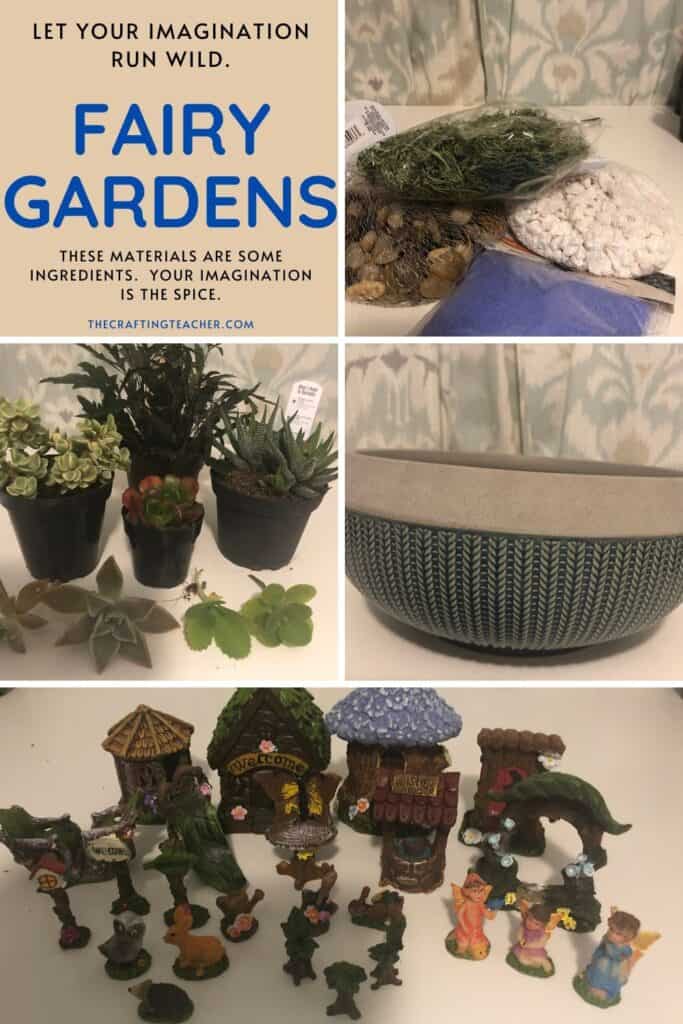
Additional Materials You Can Use:
- Fairies.
- House.
- Animals.
- Other accessories such as tableware, pots, flowers, bridges, etc.
- Pond.
- Terra cotta tray.
- Pine cones, shells, and small pieces of fabric.
- Bark.
- Old pieces of wood.
- String.
- Golf tees.
- Popsicle sticks.
What Are The Ideal Plants For a Fairy Garden?
I like to play around and try new things when I create my fairy gardens and choose plants that will go together well, go with the theme I want to create and the base I am going to use, depending on if I am using a container or a corner on my yard. Yes!, you can make your little fairy garden directly in your yard if you want. Isn’t that amazing?!!!
It is a great idea to combine different types of plants to make the little garden more realistic, but always take into consideration combining plants that have the same water and light requirements.
You can use expensive plants like bonsai (genetically designed miniatures of big trees) or not expensive at all like succulents and cacti (that are beautiful, with very different and unusual appearances and easy to take care of), but there are many other plants that you can use to make each of your fairy gardens different and unique.
This is a huge list of plants that are ideal for these mini gardens:
- Asparagus Fern.
- Baby Tears.
- Bugleweed.
- Cherry tomatoes.
- Chinese lantern’s berry.
- Coleus.
- Corsican Mint.
- Creeping Charlie.
- Dwarf Arrowhead Plant.
- Dwarf Ixora.
- Dwarf Mondo Grass.
- Dwarf Umbrella Plant.
- Elfin Thyme.
- Ellwood’s Blue Cypress.
- English Boxwood.
- False Cypress.
- Fuschia Begonia.
- Golden Creeping Speedwell.
- Golden Japanese Stonecrop.
- Golden Monterey Cypress.
- Gray Lavender Cotton.
- Lamb’s Ear.
- Lettuce.
- Mexican Heather.
- Miniature Oakleaf Creeping Fig.
- Nasturtiums.
- Norfolk Pine.
- Parlor Palm.
- Pelargonium ‘Ashfield Serenade’.
- Polka-Dot Plant.
- Ripple Peperomia.
- Silver Sprinkles Plant.
- Spikemoss.
- Sugar Vine.
- The Fairy Rose.
- Thyme Seedlings.
- Variegated Artillery Plant.
- Weeping Fig.
- Wood Sorrel.
- Zebra Haworthia.
You can see these plants HERE, HERE, HERE, and HERE.
How To Take Care Of Your Fairy Garden?
To care for your fairy garden, be sure to water it regularly if you use plants other than succulents. Succulents or cacti cannot be water more than once or twice a week, or they are going to get damaged. I suggest you use plants that go together well and need a similar type of care.
Like any regular garden, these gardens also change and grow; therefore, you might need to prune some of the plants that grow too fast or replace any others that didn’t do well and just die on you.
It is okay to change the appearance of your mini garden. Since these enchanted gardens are small and you can have them anywhere in your house regardless of where you live, you can also play with them a little and have fun.
What I mean by that is that changing the accessories with the seasons or holidays will make it look brand new and it will make you (and the fairies) fall in love with it all over again.
Where Can You Buy Your Accessories?
There are multiple places where you can buy all kinds of accessories, with prices that range between nothing and somewhat expensive. Again, it will all depend on what you want to do and what you can find in the market.
For me, it is ideal to combine handmade accessories and store-bought ones. I am always looking for something to use, and the more things you find, the more fun you will have.
Some of the places where you can find fairy garden items are:
- Amazon
- Walmart.
- Dollar Store.
- Target.
- Hobby Lobby
- JoAnn’s Fabric.
- Michael’s Craft Store.
- Thrift stores.
- Garden centers.
- Nature.
I love to buy accessories from Amazon because it offers an extensive variety. These are some of the ones I have used before, and they’re great. I can use one package of accessories for several fairy gardens; making them very affordable, besides being beautiful.
If you cannot find a section dedicated to fairy gardens in some of these stores, look for the dollhouse aisle. There’s always something you can use in there.
How Do You Place Everything Correctly?
Don’t feel stressed about choosing the “right” place for your plants and accessories. Remember that there is no right or wrong when creating a fairy garden. Just let your imagination flow, but, to make it easier…..
This is what I recommend:
- Choose the container you want to use.
- Choose the plants you want to use (I always have a variety because I also like to let my fairy gardens guide me, as I go).
- Choose a variety of accessories (I also like to have a variety available, because sometimes you need less or more, depending on the progression of your creation).
- Have your potting mix handy.
- Have a selection of gravel, stones, etc.
Once you do all of this, then these are the next steps:
- Fill the container with the potting mix.
- Choose the bigger plant you have as a focal point and plant it.
- Place the house if you have one.
- Use a stick to trace a path or walkway.
- Place smaller plants around in their original pots to decide where you are going to plant them.
- Plant your selection.
- Create a walkway with flat stones or pieces of tiles.
- Add any other items you want to use.
Another thing you have to do is leave space for a river, a lake, a beach, or anything of that nature you want to include in your fairy garden and use different materials to accomplish the desired effect. As you can see, I always have a vision of what type of fairy garden I want to make, but I am a little freelance on this. I know I’m sure some people are going to call me crazy for doing it this way, but I’ve always been a little spontaneous with my creations. Sometimes, they tell you exactly what you have to do if you listen.
Final Thoughts
I think that it is very special and rewarding when you create something beautiful with your own hands, especially something alive that grows and evolves. Fairy gardens are just like that. Beautiful creations that fill your heart with joy and allow you to dream.
I invite you to try and make one of your own. Invite your preschoolers to participate. It is a beautiful and excellent excuse to spend quality time together.
No matter what you do and the choices you make, you cannot be wrong. Just enjoy the moment and the satisfaction this miniature garden will bring you.
As my gift to you hoping to bring you a little inspiration, choose one of these printables (or all of them), put it on a frame, and place it where you can see it. Remember that when fairies come to visit they will need a place to stay.
And please, when you make your fairy garden, send me a picture. I would love to post it to encourage other people to make them as well.
Be happy, safe, and creative. I wish you well.
Love,

P.S. If you like this post please share it and send me a message about your experience making your very own fairy garden. I would love to hear from you. Thank you!

